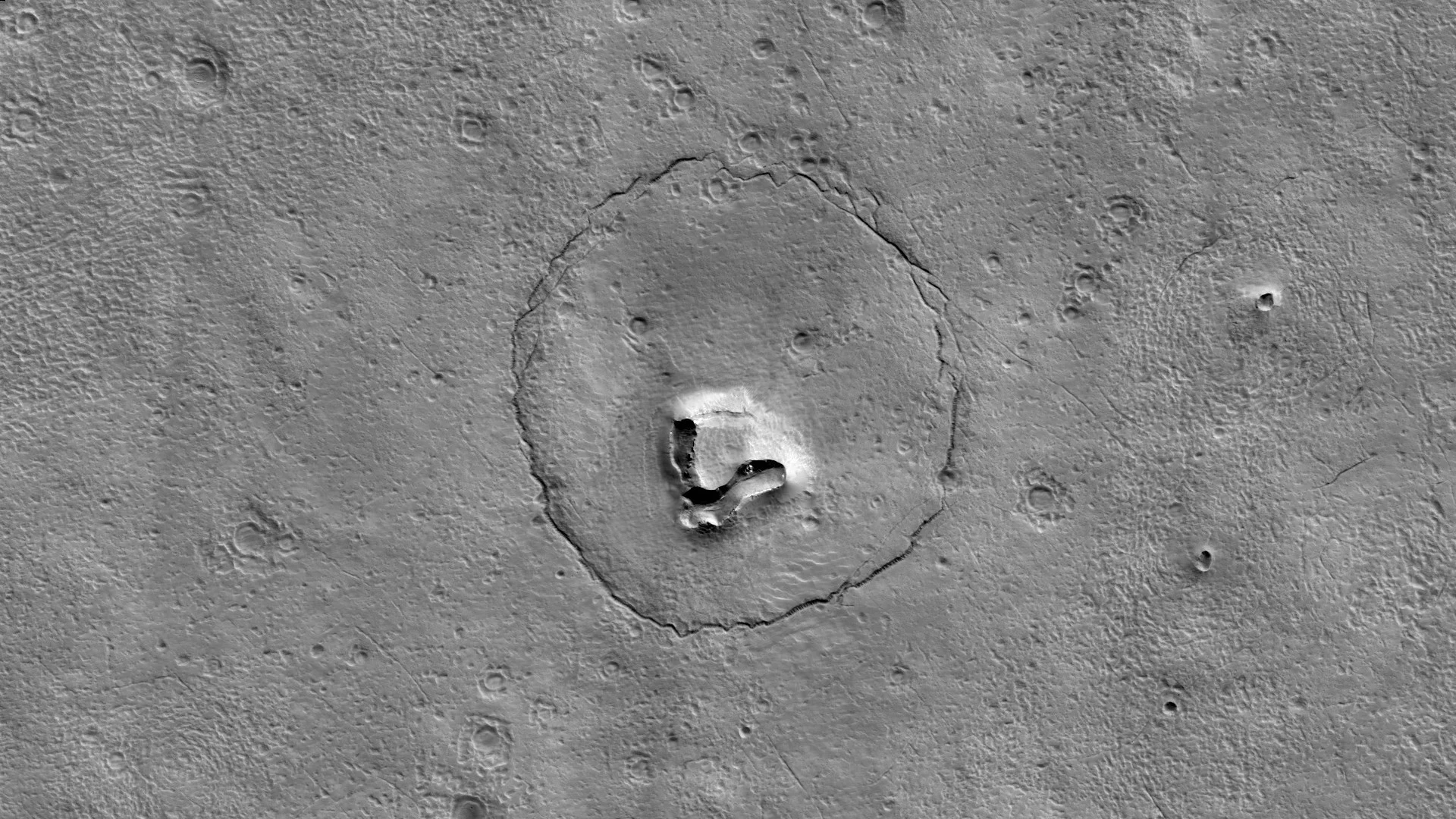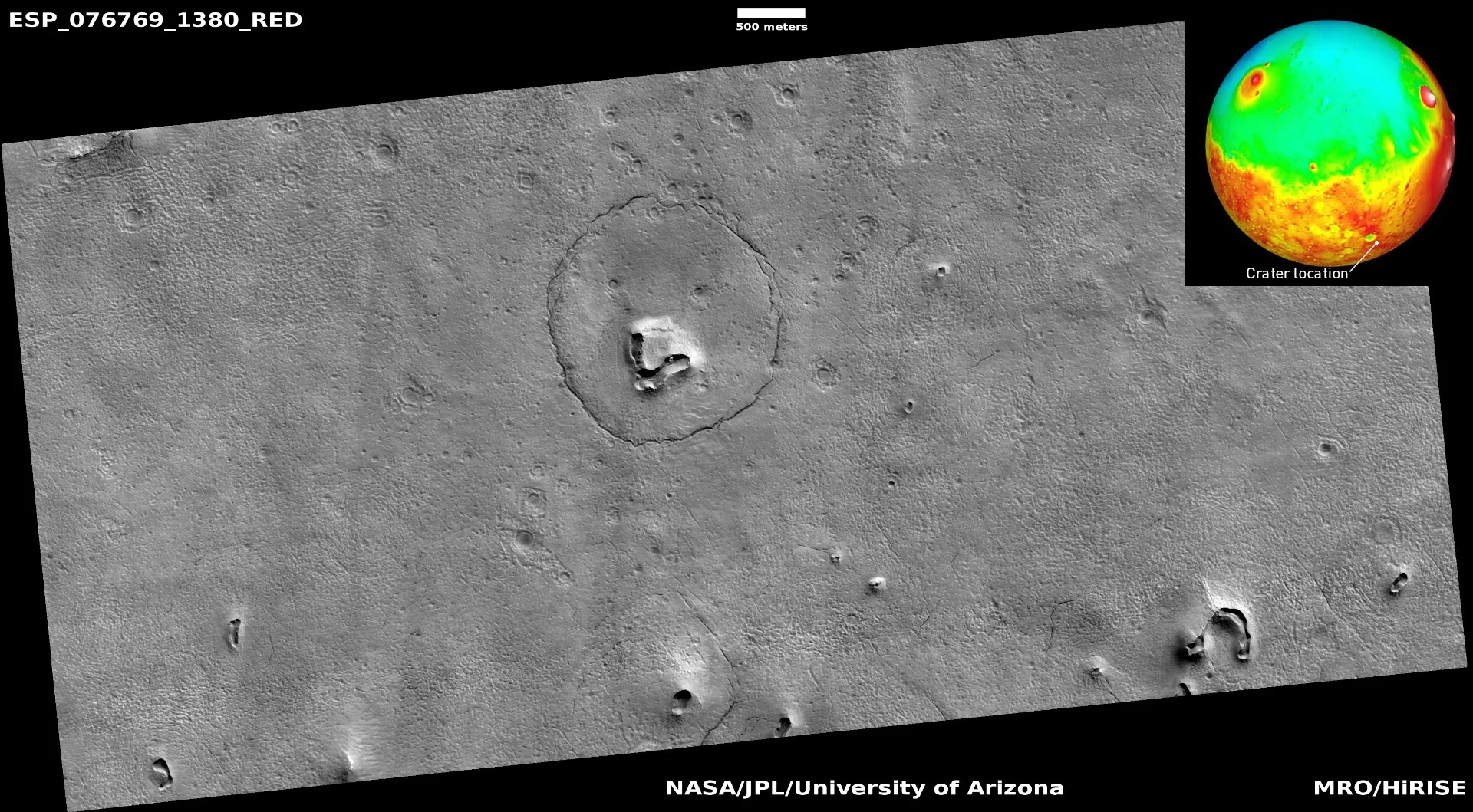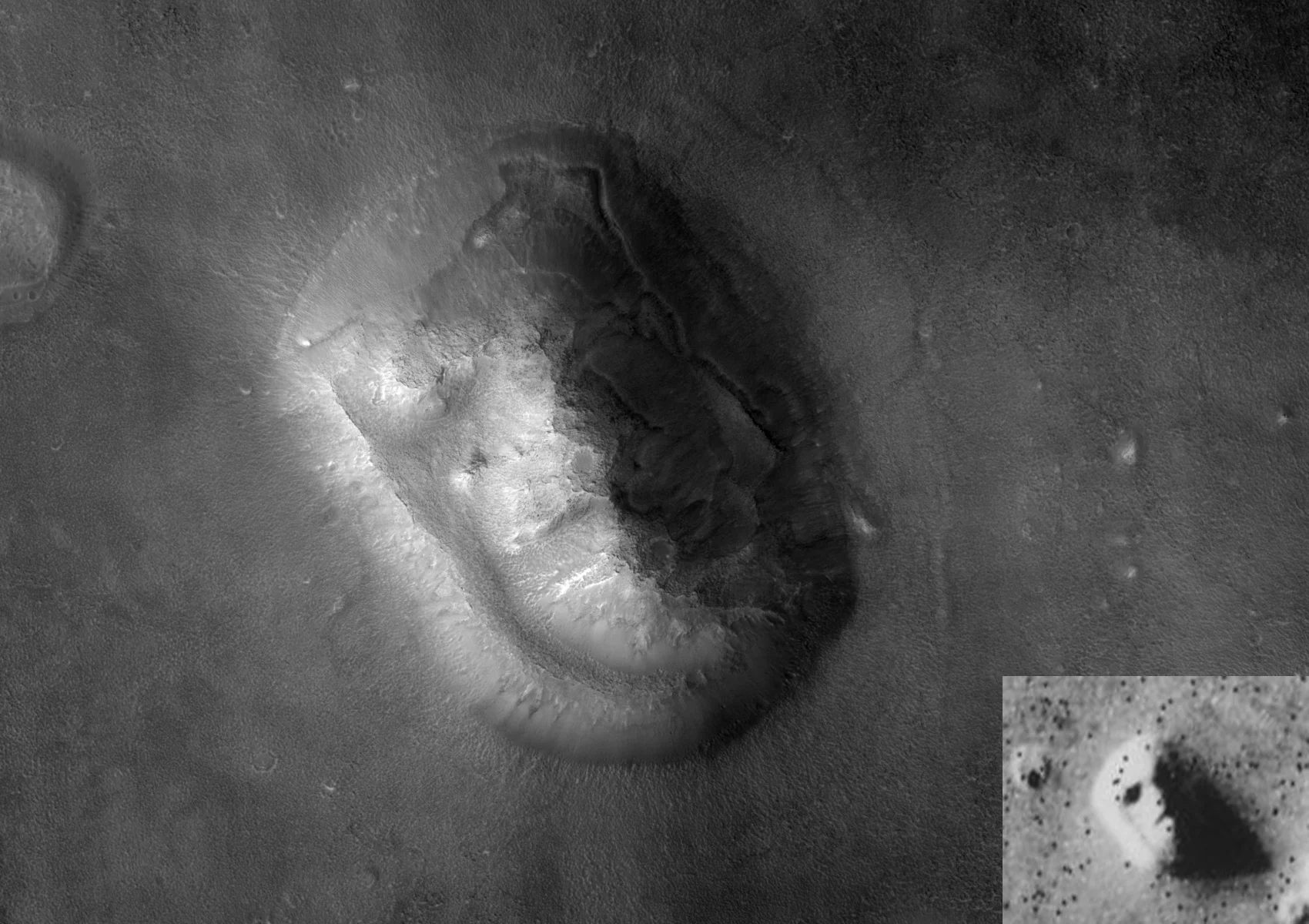
Mars formation 'bears' a striking resemblance
Mars is a bizarre alien world, but orbiters reveal that some parts of it appear strangely familiar.
Remember the 'face on Mars'? Well, here's a new spin on it, as a NASA orbiter returned a picture that "bears" a striking resemblance to something else we see here on Earth.
In the heavily-cratered highlands of Mars' southern hemisphere, near the middle of a region known as Terra Sirenum, there's a small, seemingly unremarkable impact site — that is, until you take a closer look at it.

This image was captured by MRO's HiRISE instrument as the spacecraft flew over Terra Sirenum on December 12, 2022. The false-colour terrain map, inset top right, shows the location of the features seen in the image. Credit: NASA/JPL-Caltech/UArizona
The stretch of Martian surface shown above was imaged by the High Resolution Imaging Science Experiment (HiRISE), a camera installed on NASA's Mars Reconnaissance Orbiter (MRO). Near the centre of the view, a set of features roughly 1.5 km across resembles the face of a bear looking up at the camera!
"There's a hill with a V-shaped collapse structure (the nose), two craters (the eyes), and a circular fracture pattern (the head)," Alfred McEwen of the Lunar and Planetary Lab at the University of Arizona wrote in a blog post.
"The circular fracture pattern might be due to the settling of a deposit over a buried impact crater," McEwen explained. "Maybe the nose is a volcanic or mud vent and the deposit could be lava or mud flows?"
"Maybe just grin and bear it," he quipped.
Seeing things that aren't there
Pareidolia is a powerful thing.
Here on Earth, we see faces and shapes in everyday objects, even clouds and waves.
The 'illusion' of seeing faces is thought to have evolved for a few reasons. It may stem from infants learning to recognize the faces of people, especially family members, very early on. It would also have been a way for our early ancestors to avoid dangers. Whether a face spied in the wilderness was truly there or not, spotting it quickly could have prevented becoming a meal to a lurking predator.
These days, as we use telescopes to scan the cosmos, and with rovers and orbiters exploring the planets in our solar system, we see faces and other familiar forms in an even greater variety of locations. For example, in 1976, when NASA's Viking 1 mission arrived at Mars, the orbiter returned a curious image that appeared to be a human-like face staring up from the surface.
Was this a monument built by an ancient Martian culture to communicate with their neighbours long after they died off or left the planet? Science fiction certainly had fun with that idea.

This 2007 image of Cydonia, taken by MRO's HiRISE camera, is compared with the 1976 Viking 1 orbiter photo (inset). Credit: NASA/JPL-Caltech/University of Arizona
This was an enduring mystery until future orbiters such as the Mars Global Surveyor and MRO arrived. With better views of the location, named Cydonia, it was revealed that the supposed face was just a trick of light and shadow.
With so much imagery now from Mars, it's sometimes hard not to find examples of pareidolia in them.
NASA scientists pointed out more than a dozen in just one image from the Spirit rover taken in 2008. HiRISE spotted Beaker, from Muppet Labs, in 2018. And it's not just faces, hands, and animals. Some formations on Mars, when viewed from the right (or wrong) angle, can even look like trees!

This image, taken by HiRISE in April 2008, shows icy sand dunes near the north pole of Mars, and are those trees sticking out of the dunes?? No, the dark streaks are caused as carbon dioxide ice sublimates in the sunlight, resulting in plumes of CO2 that loft the dark sand up, where it cascades down the dune slopes. The clue that reveals the truth about the images is that the supposed 'trees' do not cast any shadows. Credit: NASA/JPL-Caltech/University of Arizona











